6
REPTOIDS AND THE SHEMSU HOR
Come not between the Dragon, and his Wrath.
WILLIAM SHAKESPEARE, KING LEAR, ACT 1, SCENE 1
THE FIRST PHARAOH in Egyptian recorded history was Menes-Narmer, who ruled about three thousand years before the Common Era. Menes-Narmer’s reign was chosen as the starting point because that is as far back as we can trace to the beginning of human civilization. Our civilization was born from the destruction of the previous one. As chronicled on the Palermo stone, there was a civilization prior to the present one that went back anywhere between twenty and thirty thousand years and had a good grasp of astronomy, engineering, biology, bioengineering, chemistry, and sacred geometry—all of which required advanced knowledge of mathematics and applications of that knowledge that we do not have today. Logic tells us the time before Menes was the last Golden Age.
Mainstream academia treats Egypt’s prepharaonic past as if it had never existed because it disappeared quite suddenly, as did many other similarly ancient cultures throughout the world. It is typically referred to as a “lost” civilization, but our world, our universe, and the galaxy beyond are cyclical. Every cyclical process has an end, and life-forms dwindle, become extinct, or evolve.
The fragmented influence of the last Golden Age reached the Egyptian culture some time later. The Egyptian civilization and culture appear to have suddenly sprung up out of nowhere. Even Egyptologists who adhere to mainstream thinking, such as the distinguished Cambridge Egyptologist Dr. Toby Wilkinson, admit that “they don’t seem to have an ancestry, they don’t seem to have any period of development, they just seem almost to appear overnight. This has left people pondering, and of course it has been fertile ground for the unorthodox who suggest it was all planted by aliens.”1
These mysterious rulers of previous Golden Ages are the “divine” beings the ancient Egyptians believe their civilization came from. These claims of divine lineage are regarded as myths and are derided by official Egyptologists. The recent uproar concerning Dr. Alaaeldin Shaheen of Cairo is a good example of how official Egyptology adheres to the time line that it has compiled, even in the face of contradictory evidence. Dr. Shaheen, one of Egypt’s premiere archaeologists, was overheard during a press conference saying that aliens had built the pyramids and that his research team had found evidence of alien technology on the Giza Plateau. This news quickly spread through Internet conspiracy chat rooms and caused a furor in academic circles. Shortly thereafter, Dr. Shaheen replied with a token rebuttal, claiming that he never made such a ludicrous statement. But in his response was a thinly veiled admission that even if he did discover that aliens had been involved in Egypt’s past, as an Egyptologist with a doctorate and dependent on grants from universities, it would be career suicide to publicly assert that.
His official response, in an e-mail to investigative journalist Andrew Collins reads: “Kindly be informed that I did not give such stupid statement[s] about aliens and pyramids. As [I am] Egyptologist I could [not] say such stupid words and ideas.”2
More double standards can be found by studying the so-called father of Egyptology himself: Manetho, an Egyptian high priest who studied at the famous library of Alexandria and wrote a thirty-volume history of Egypt. Written in Greek, the Aegyptiaca was compiled during the third century BCE, supposedly for Ptolemy I, II, or III during their reigns as kings of Egypt. Historians don’t know exactly which Ptolemaic king Manetho originally wrote his book for but have narrowed it down to one of the three, using dating techniques and historical clues now available. Manetho had a mixed background, with one parent being of Egyptian heritage and the other Greek, and spent his entire life in Egypt. He had an advantage over the scholars of his time in that he could speak and read both Greek and Egyptian, making his translations much more accurate. He compiled a predynastic kings list that stretched deep into the Golden Age, when Thoth roamed ancient Egypt, anywhere from 33,894 to 23,642 BCE. The list of the predynastic kings found on the Palermo stone validated the controversial list that Manetho first wrote about.3
Manetho’s list is what Egyptologists use when teaching their official time line and chronology of Egyptian history. It’s disturbing that Egyptologists would use Manetho’s dating to establish the officially recognized time frame of the pharaoh dynasties, but completely ignore the mysterious rulers of the predynastic epochs he cites. This “official” listing completely disregards the history already written because it goes against the time line academic institutions contend is the truth. Simply put, scholars claim to know the history of Egypt better than the ancient Egyptians who wrote it.
Manetho’s works would eventually be superseded by Herodotus, and Manetho’s original manuscripts would become lost to time. Thankfully, Eusebius, Caesar’s bishop in Palestine, and the Byzantine scribe Syncellus, also studying in Palestine, followed in Manetho’s footsteps, providing more proof of predynastic genealogies of the ancient Egyptians.4 Manetho wrote that the original Sky Gods lived long lives and reigned for hundreds of years more than thirty thousand years ago, but his assertions would fade out of history and be replaced by stories of semidivine kings who still lived long lives as much as twelve thousand years in the past. These semidivine kings would come to be known as the Followers of Horus or, more traditionally, the Shemsu Hor, a term coined by researcher Schwaller de Lubicz.5 The word Shemsu likely comes from the Akkadian shamash, which means “serpent,” and Hor derives from Horus, the hawk-headed god of the rising and setting Sun.
According to the oral traditions of the indigenous Egyptians, the Shemsu Hor were present during the Golden Ages of the original divine kings, and they remained long after these kings ascended back into the stars. The Shemsu Hor inherited the sacred knowledge of the Giza Plateau and continued to use the pyramids in the Band of Peace and the surrounding energy fields as they were meant to be used. They reestablished, maintained, and rebuilt temples and foundations in sacred locations that had once been populous areas and cities of the original divine kings. Thousands of years before the last major flood, the Shemsu Hor maintained the most ancient cities in Egypt, cities so illustrious and steeped in Egyptian mythology that the very roots of their alien history lay in plain view but somehow remain shrouded in mystery.
Heliopolis, meaning “city of the Sun,” was one of the largest religious and science centers of ancient Egypt and was the original home of the sun god Ra. It’s also where the famed Phoenix, or Benu Bird (spaceships), would return to every twelve thousand years or so.6 Before its destruction by invading Persians in 525 BCE, Heliopolis was the main center of knowledge in antiquity and the source of our solar calendars.
A popular tourist destination, it was once visited by some of the most distinguished scholars of the past, including Pythagoras, Herodotus, Solon, Thales, Democritus, Opheus, and Homer. Plato lived in Heliopolis for thirteen years, and while there, we assume, he learned the legend of Atlantis from the Egyptian priest Solon, who knew about it from studying the vast annals of the city’s ancient history.7 This metropolis eventually vanished, with nothing to testify to its existence except the beautifully carved, massive obelisks that survived the ages. There’s a good chance that half of Heliopolis’s predynastic splendor lies buried under Cairo, where new temples are still being discovered.8
Lost megalithic wonders swallowed by the desert are also what we find when studying the remaining ruins of the other major city of ancient Egypt believed to have divine roots—the awe-inspiring and majestic locale known as Abydos (see plate 13).
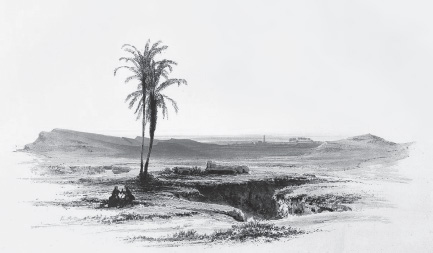
Figure 6.1. Heliopolis. This drawing is by German artist Karl Richard Lepsius during an 1845 scientific expedition for the King of Prussia.
Abydos means the “hill of the emblem.” Although some scholars replace emblem with the word symbol, both these words refer to the sacred head of Osiris.9 Is it possible that before being murdered, Osiris was the lead alien commander on Earth, where he took on a human form and helped establish civilization? According to Egyptian mythology, the eldest son of the sun god Ra, Osiris was sent to live among the humans and teach them the ways of goodness. After his death, his body was cut into fourteen pieces and separated. The fourteen pieces of Osiris are a reference to the sun’s passing through the zodiacal cycles of a precessional Great Year, the normal twelve constellations of the zodiac, plus the extra two in the forms of Ophiuchus and Orion.10 Isis gathered the scattered remains and, with the help of her sister Nephthys, plus Anubis and Thoth, somehow magically resurrected Osiris and made him rise again after three days.
The story of Osiris is so old that it has inspired countless knockoffs. It echoes the biblical story of Cain and Abel and the life of Jesus. Gerald L. Berry describes the power this ancient tale has wielded over the ages. It has prompted legends once based on historical events that happened tens of thousands of years before in the Golden Age:
Osiris . . . was successively god of the Nile, a life-giver, a sun-god, god of justice and love, and finally a resurrected god who ruled in the afterlife. . . . The most popular legend about Osiris is one of a resurrected god. He was killed by Set, the god of darkness . . . Osiris was then resurrected and went to live on high. Osiris became the first of a long line of resurrected deities—Tammuz, Mithras, Balder, Christ. Every spring the life of Osiris was re-enacted at Abydos in a stirring passion play, dating back to the eighteenth or nineteenth century before Christ. This play is the earliest record in history of drama.11
From the earliest times, Osiris has been related to the constellation Orion. In addition, the pyramids at Giza align with this very constellation, providing yet another clue in understanding the alien mysteries of ancient Egypt. Abydos was the original home of the divine kings, and the ancient Egyptians believed the tomb of Osiris was located under one of the many splendid temples built there. Supposedly, the temple of the Osirian once housed the body of the god Osiris, and his sacred head was encased in glass, held up on scepters, and paraded around by priests during ancient ceremonies.12
The temple of the Osirian sits at the rear of a much larger temple complex attributed to Seti I and was discovered in 1903. More than half of its impressive structure is still buried under the sand. To complicate matters even more, the Osirian is also flooded by an ancient water source that has turned the pools surrounding the stone columns an oozy shade of green (see plate 14). The Osirian’s underground megalithic chambers of Osiris are rumored to be the most ancient of all Egyptian ruins. The massive megalithic blocks that compose the Osirian are similar to those found on the oldest parts of the Giza Plateau, like the Valley and Sphinx temple and the Chephren funerary complex.
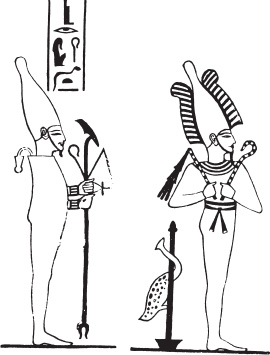
Figure 6.2. Line drawing of the Egyptian god Osiris. From Karl Baedeker, Handbook for Traveling: Lower Egypt, with the Fayum and the Peninsula of Sinai, part 1, 1885.
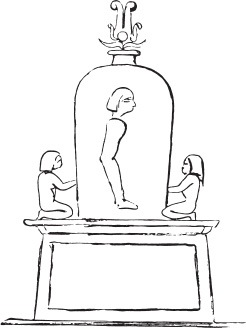
Figure 6.3. The Shrine of Osiris; Osiris is being put back together for his resurrection. From Amelia B. Edwards, A Thousand Miles Up the Nile, 1890.
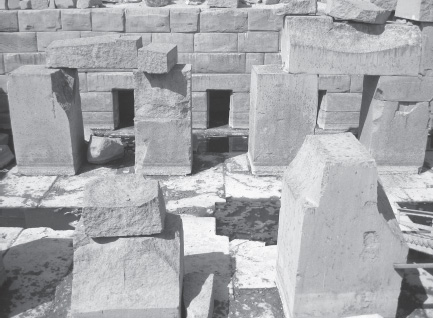
Figure 6.4. Temple of the Osirian. Courtesy of Merlin-UK.

Figure 6.5. Another view of the Temple of the Osirian. Courtesy of Merlin-UK.
Some of the enormous red granite blocks and pillars used in the Osirian’s construction weigh up to one hundred tons apiece. The roof of the Osirian is composed of these massive stone pillars. Placing these stone pillars atop the complex is a feat of unparalleled engineering; even our most advanced crane technology could not duplicate it. Although it has been rebuilt numerous times over the years, the remaining temple complex of Seti I is also impressive. Still standing are massive megalithic blocks, all pointing to construction dating back to the Golden Age. The temple of Seti I at Abydos represents some of the finest masonry seen in all of Egypt and includes an amazing assortment of beautifully carved reliefs and hieroglyphs. The most famous are the brazen images of a helicopter, a submarine, a tank, and what appears to be Luke Skywalker’s Tatooine cruiser.
First discovered during an archaeological expedition in 1848, the mysterious glyphs on a ceiling beam high above the temple grounds were copied and passed around scholarly circles in Europe. However, since flight had yet to be invented by the Wright brothers, these bizarre hieroglyphs were quickly stored away and forgotten until curious tourists began snapping photos of Seti’s temples in the early 1990s and posting them on the Internet. These images are instantly recognizable, especially the helicopter, but the consensus of skeptics and Egyptologists is that the glyphs are re-carved inscriptions of an overlaid royal cartouche. Claiming that Ramses II carved over the panel of Seti I with his own inscriptions, essentially doubling the original hieroglyphs.
Egyptologists claim these glyphs are nothing more than illusions, resulting from years of re-carving and weathering that over a period of time creates an overlapping effect known as palimpsests, which look nothing like the original hieroglyphs. However, one of the oldest Arab newspapers, Al-Sharq Al-Awsat, published several photographs taken by Egyptologists at a different temple in Karnak that show the exact same features as a helicopter.13 These suppressed pictures put to rest the palimpsest theory. What are the odds that two exact palimpsests of strange hieroglyphs, showing machines apparently capable of flight, would be found hundreds of miles apart from each other? The actual hieroglyphs speak for themselves. The images are undeniable.
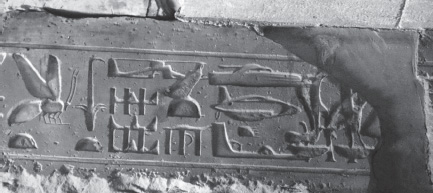
Figure 6.6. Hieroglyphs showing seemingly modern aircraft and vehicles depicted on a riser in a temple in Abydos, Egypt. Courtesy of Olek95.
How many more hieroglyphs of these helicopters and submarines still lie unseen, buried beneath the Egyptian sands? The fact that these hieroglyphs are found in an area with roots stretching back to the Golden Ages proves that in the archaic past high levels of technology were the norm. Certainly, these myths had once been real and the impact on the human psyche over the millennia has forced humankind to occasionally remind ourselves of this extraordinary history. Deep in their past, the ancient Egyptians saw flying vehicles, and the memory survives to this day. We have proof of this knowledge, although it’s another anomaly Egyptologists would rather not discuss:
Numerous wooden models of glider airplanes have been found in Egyptian tombs. One example was found in 1898 at the Saqqara ruins and catalogued by the Cairo Museum as item #6347, but misidentified as a “bird.” That plane, which dated to 2000 BCE, along with several others, was reexamined in 1969. They all incorporated a direct dihedral angle of wing attachment, with aerodynamically designed proportions that were ideal for flight.14
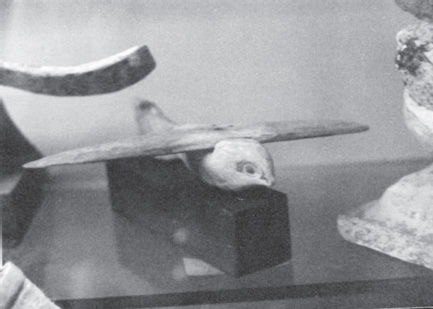
Figure 6.7. Glider model from the ruins of Saqqara. The model resembles a bird but with a vertical tail, no legs, and straight wings. Courtesy of Dawoudk.
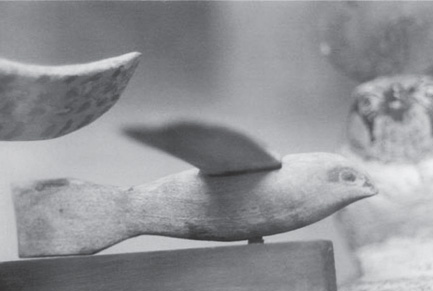
Figure 6.8. Side view of the glider. Courtesy of Dawoudk.
These advanced, space-age feats were understood by the Shemsu Hor, who ruled when the ancient lands of Egypt were tropical and lush. These semidivine kings received a legacy designed to maintain humanity’s consciousness at a level of uplifted, creative awareness, in tune with nature and the psychic realms of the universe. Unfortunately, the Shemsu Hor cycled out of the Golden Age and into a Dark Age that saw the world destroyed by epic floods of the last great cataclysm. The Shemsu Hor who managed to survive this catastrophe relocated underground and remained undetected while the various other life-forms on Earth took thousands of years to repopulate and rebuild civilization. After nearly being wiped out, the semidivine Shemsu Hor were forced to reevaluate their future and the future role that humanity, who were inferior to them in knowledge, would play in their plans to regain the lost technology. The Shemsu Hor were beings who shared Earth with humans, but were not like us. Perhaps much superior in intellect, this race, known as the followers of Horus, had a different form.
The myths of ancient reptilian beings appear in all the cultures of the world. The haunting image of the serpent or snake is ubiquitous within Egyptian iconography, representing something we have misinterpreted for hundreds of years. The Shemsu Hor were either reptilian or human-reptilian hybrids. The topic of the reptilian alien is the most lauded, criticized, and hated aspect of the ancient astronaut theory. David Icke made it famous,15 but it was already a subject of speculation and discussion since at least medieval times, when brave knights went on quests to slay dragons.
Let’s take a closer look at the origin of the world’s most controversial conspiracy theory and determine if it is possible that the Shemsu Hor were indeed reptilian and if there are clues in ancient Egypt to corroborate this conjecture. According to David Icke’s theory, the reptilian alien species originated in Thuban, also known as Alpha-Draconis, which is a star system in the constellation of Draco.16 However, if we take into account evolution, the reptilians may not have needed to travel millions of light-years to reach our world: they might have evolved into an intelligent species over vast periods right here on Earth.
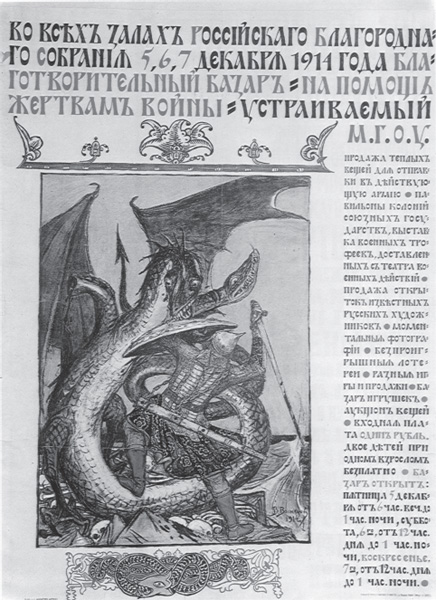
Figure 6.9. Russian poster (1914); St. George killing the dragon. Courtesy of Viktor Vasnetsov.
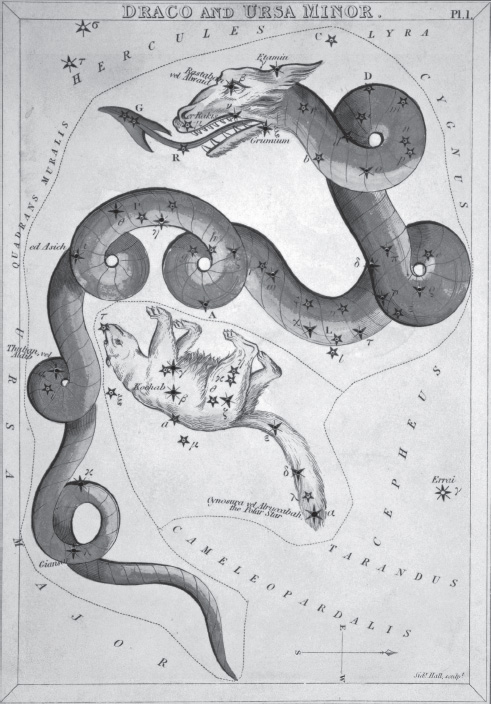
Figure 6.10. Draco sketch (1825). Courtesy of Sidney Hall.
Scientists who support Darwinian evolution admit that our earliest ancestors were reptiles and that mammals evolved from them millions of years ago. According to the theory of evolution, the relationship between reptiles and mammals could be viewed as a matter of Which came first—the chicken or the egg? Mainstream theory holds that mammals proliferated and evolved into intelligent beings with dominion over the animal kingdom because our greatest threat, the dinosaurs, were killed by an unknown and still-debated cataclysm. The problem is that we still have reptilian species around today so old that they might as well be labeled living dinosaurs, such as the Komodo dragon.
Another ancient and permanent link humans share with reptiles lies in that mysterious slush of watery neuronal space we call our brains. The reptilian and human brains both share a few key similarities. The most primitive part of our brain, the stem, performs the same functions as and is similar to the brain stems of reptiles. Sitting at the top of our spinal cord, this part of the brain is even called the “reptilian brain,”17 or the R-complex (reptilian complex), and is said to govern the more dinosaurian functions, such as aggressiveness, territoriality, and mob-rule behavior. This area of the brain is much older than the recent additions that make up the higher parts of the modern brain, such as the limbic system and the neocortex, or outer layer. How the brain evolved is another mystery.18
It is interesting that the limbic area of the brain is responsible for reasoning, love, and knowing the difference between good and evil, which is exactly what ancient creation myths claim the serpent provided to humanity. Reptiles and humans also function in a similar way when it comes to vision, respiration, eating, and circulation. Paleontologist Dale Russell suggests that if the Troodon dinosaur hadn’t perished in the Cretaceous–Tertiary extinction event*1 sixty-five million years ago, its brain would have developed six times faster than all other known brains of the ancient era. This would have happened because the encephalization quotient of the brain weight, when compared to that of other species with the same body weight as the Troodon, was perfectly proportioned for speedy, exponential growth. In addition, the Troodon already had a brain six times larger than any of its known dinosaur contemporaries.19
Russell postulates that, over millions of years, this “dinosauroid”20 would have become sapient and intelligent long before humans. It is possible that the reptiles didn’t all die during the so-called dinosaur extinction event and over millions of years evolved into intelligent beings. These beings could have developed technology on their own, traversed the skies themselves, and possibly even had a close encounter with alien species deep in the remote past. Famed biological scientist Ronald Breslow, PhD, released a study on April 12, 2012, suggesting that “alien worlds could be full of super-intelligent dinosaurs”21 and that humans were only able to triumph on Earth because an asteroid wiped out ours.
Maybe at some point their DNA, along with ours, was tampered with by another set of unknown aliens. No one knows for certain, but there’s plenty of evidence indicating that a species of intelligent reptiles might have also evolved at one point during Earth’s long history. Recently, Associate Professor Sheila Coulson, from the University of Oslo, found an image of a python engraved on a six-meter-long stone in Botswana. The python was an important player in South African creation myths. According to those myths, the python once appeared intelligent and upright. The carved image and other artifacts found within the cave systems near the discovery have proved to be at least seventy thousand years old.22 These ancient ritual grounds of the python date from a staggering thirty thousand years earlier than the oldest discoveries in Europe.
Our genetic memories and the events of long ago are replete with dragons, snakes, reptiles, vipers, and descriptions of various other fork-tongued monsters and hybrids. John the Baptist, in Matthew 3:7, referred to the mysterious sect called the Pharisees as a “generation of vipers”23 and the “Jinn” of Middle Eastern folklore were an ancient race of serpents that predated all other demonic or angelic beings on Earth. The ancient kingdoms of Mexico, including the Toltecs, Mayan, and Aztec, all claim that a “serpent”24 gave them wisdom and enlightened humankind. The Hopi, Cherokee, and other Native American tribes believe their culture came from ancient “snake-brothers”25 that emerged from underground labyrinths and civilized humanity. The Chinese have similar legends of the “dragon kings”26 that emerged from the waters of the four corners of Earth to bring them civilization.
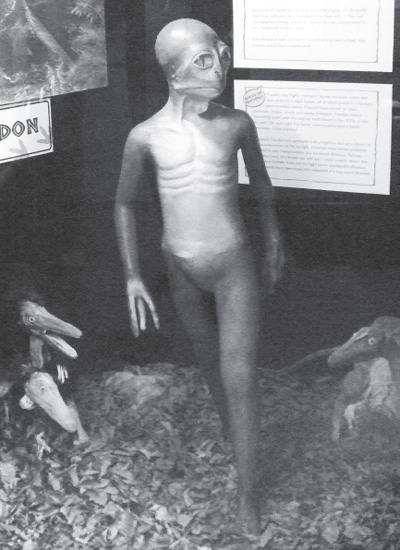
Figure 6.11. In 1982 paleontologist Dale Russell, curator of vertebrate fossils at the National Museum of Canada in Ottawa, conjectured a possible evolutionary path that might have been taken by bipedal predator dinosaurs, like the one pictured here, had they not all perished sixty-five million years ago. A few scientists have embraced Russell’s idea, but many are highly skeptical. Courtesy of FunkMonk.
Cecrops I, a native of Egypt and the founder of Athens, was the “first to establish civil government and marriages among the Greeks”27 and was described by some writers as a monster—half-man and half-serpent. Images seen carved in various coins and on the famous frescoes of the Greek-Turkish town of Pergamum depict giant human warriors with legs of snakes.28 Boreas was the Greek god of winter and the north wind, who, according to the historian Pausanias, “appears as serpent-legged on the famous coffer of Kypselos.”29 On another vase, Boreas is shown as a “huge winged monster, half man and half a double snake.”30
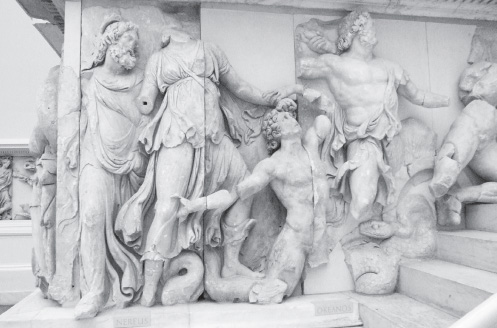
Figure 6.12. The Pergamon Altar; the Gigantomachy frieze depicts the struggle of the gods against the children of the primordial goddess Gaia, who were snake-footed giants. Courtesy of Claus Ableiter.
British Lieutenant-General Sir Henry D’Oyley Torrens wrote a travel book in 1862 after exploring the historic regions of Hindostan, which included Ladak, Kashmir, and the Himalayan regions of China. In the book he describes a curious legend recounted to him during a trek past the village of Bourwa, more than seven thousand feet high, near the Rotung Pass of the Himalayas. After passing by a causeway of stones, one of the guides pointed out to Torrens that they were now in a sacred area, the place of a famous event immortalized in Hindu mythology. On this high mountain an army of serpents had an outpost assigned to guard the giant race the Hindus called the Rakis from the wrath of the gods. Apparently, this snake army was no match for the gods, and the giant Rakis were forced out of hiding and slain. According to Torrens, the gods, “took the field, utterly routed the Rakis, and slew them a giant. The fossils so plentifully strewed over the Sewalik, or lowest ranges of the Himalayas, are the bones of the slain Rakis!!!”31 It’s an amazing tale that not only focuses on the serpent race but also on Earth’s other most mysterious lost race—the giants.
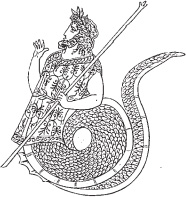
Figure 6.13. Cecrop, the serpent-king of Athens. Illustration from a vase found at Palermo. This image comes from Hermann Julius Meyer, Meyers Konversations-Lexikon encyclopedia, fourth edition, 1885–90.
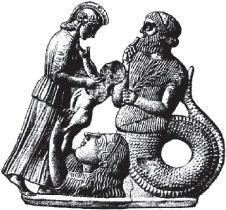
Figure 6.14. Melian relief in clay, about 460 BCE. On the left, Gaia offers Erichthonius to Athena; on the right is Cecrops. From Wilhelm Heinrich Roscher, Ausführliches Lexikon der griechischen und römischen Mythologie [Concise Dictionary of Greek and Roman Mythology], 1884.
The ancient Indian scriptures include a race of reptilians known as the Naga that had “hoods and the body of a man, the lower extremities being like that of a reptile.”32 The Naga descended from the Sarpa, an earlier serpent race found in Hindu texts. Writers of Marco Polo’s era described the Syrictae of India as a nomadic tribe with snakelike nostrils in place of noses and “after the manner of snakes they have their legs and feet limmer, wherewith they crawl and creep.”33 The original Naga have been described in the Mahābhārata as having the ability to shape-shift into human form, and the texts even share other ancient beliefs in a serpent race that lived underground for long periods of time.34
In the Haggadah, a tenth-century Jewish manuscript, the scribes clearly record that the serpent was not merely a snake, but stood erect and was highly intelligent:
Among the animals, the serpent was notable. Of all of them, he had the most excellent qualities, in some of which he resembled man. Like man, he stood upright upon two feet, and in height, he was equal to the camel . . . His superior mental gifts caused him to become an infidel . . . In punishment for tempting Eve, God said, “I created you to be king over the animals . . . but you were not satisfied. . . . I created you of upright posture.35
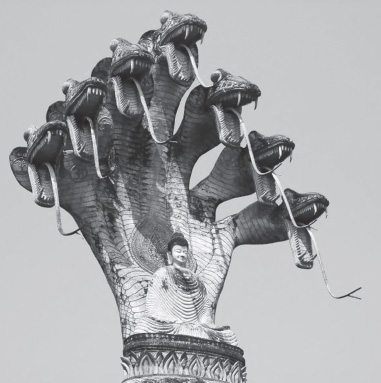
Figure 6.15. Buddha under the Nagas, Nong Khai, Thailand. Courtesy of jpatokal.
The serpent is also a prominent character in other ancient texts. In 1945 a peasant in the Egyptian town of Nag Hammadi found a sealed jar with twelve leather-bound papyrus codices stuffed inside. Named after the town in which they were discovered, the Nag Hammadi Texts are similar to the Dead Sea Scrolls and are considered to be key early Gnostic histories of Christianity. The controversy that surrounds their translation is justified since the tree of knowledge story it contains is much different from the version found in Genesis. These ancient texts describe Adam and Eve as a race of humans that the gods were experimenting with. On a particular occasion, a council of seven gods approached Adam and Eve in the Garden of Eden, warning them not to eat fruit from the tree of knowledge. The gods then frightened the young human prototypes with the boisterous spectacle caused by their spaceships flying back up into the sky.
Now terrified, Adam and Eve were approached by
the one who is wiser than all of them, this one who was called “the beast”. . . And when he saw the likeness of their mother Eve, he said to her, “What is it that God said to you?” “Don’t eat from the tree of knowledge,” she said. “He not only said, ‘Don’t eat from it,’ but ‘Don’t you touch it lest [you] die.’” He said to her, “Don’t be afraid! You certainly shall [not die]. For [he knows] that when you eat from it your mind will be sobered and you will become like God, knowing the distinctions which exist between evil and good men. For he said this to you, lest you eat from it, since he is jealous.” Now Eve believed the words of the instructor. She looked at the tree and she saw that [the fruit] was beautiful and magnificent, and she desired it. She took some of [the] fruit and ate, and she gave to her husband also, and he ate too. Then their minds opened. For when they ate, the light of knowledge shone for them . . . when they saw their makers, they loathed them since they were beastly forms. They understood very much.36
This rebellious act by the reptilians to give humans knowledge can be compared today with the selling or trading of national security secrets. This one, of particularly grave importance, angered the gods who, after finding out, immediately retaliated by returning to the Garden of Eden to hack off the arms and legs of the serpent. Adam and Eve hid while the gods roamed in their spaceships, causing the typical noise and shuddering associated with their technologically advanced landings.
The symbolic meaning of the tree of life is usually associated with DNA and the intertwined helixes that compose it. But an alternative viewpoint, based on the reverence in which it was held by the ancients of all civilizations, is that the tree of life refers to cannabis. Adam and Eve were created so as not to be able to distinguish truth, and ultimate truth is the knowledge of God. This knowledge places its holder above the ills of mortal humans. Cannabis acts like a robot override, in that it opens the mind’s eye. It is curious that only after consuming the fruit of the tree did Adam and Eve realize they were naked!
The ancient cannabis plant has been used in religious ceremonies and for personal reasons for thousands of years and is known by many different names. Rastafarians refer to it as “Ganja”; they believe it is the “healing of the nations” and attribute its holiness to its having been found growing on King Solomon’s grave. Recently, the world’s oldest weed stash was discovered in a tomb deep in China’s Gobi Desert. Two pounds of still-green herb were discovered by a team of stunned archaeologists who no doubt must have had a good laugh at the 2,700-year-old haul.37
Hieroglyphs of the marijuana leaf exist in Egypt but are rarely pointed out to tourists. In fact, it’s not mentioned or even admitted, and according to Egyptologists, the recognizable image of the hemp/ marijuana leaf is nothing more than the Seshat emblem, a hieroglyph associated with a star that has nothing to do with pothead fantasies. It’s interesting to note, however, that the Seshat image is one of the oldest hieroglyphs found in ancient Egypt and represents the goddess Seshat, who wore the Seshat emblem of a long-stemmed, seven-petal flower on top of her head. Seshat was the goddess of writing; the hieroglyph represents the feminine side of artistic expression and implies the power of relating hidden mysteries and secrets to the masses. The goddess Seshat makes these mysteries understandable with the help of the Seshat flower, a powerful conductor of creative forces.38
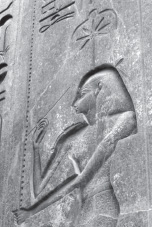
Figure 6.16. Seshat, goddess of knowledge and writing, at Luxor. Courtesy of Karen Green.
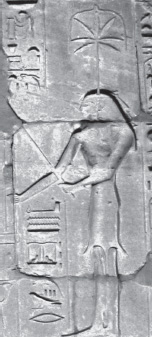
Figure 6.17. Seshat. Karnak Temple in Luxor. Courtesy of Steve F.-E.Cameron.
Dr. Rick Strassman, a specialist in psychiatry and psychopharmacology research, was the first person in America to use psychedelic or entheogenic substances on humans after a twenty-year ban on such practices. He discovered that users of the drug dimethyltryptamine (DMT) have encounters with reptilian entities; sometimes these reptiles are more humanoid in appearance, other times they are more beastlike. The main trigger for these encounters is DMT, which the brain produces naturally before death and is the main ingredient in the shamanic plant potion ayahuasca.39
The ayahuasca plant, commonly found in Brazil, is known to be at least twenty times more powerful than LSD, and some believe the psychedelic effects caused when drinking ayahuasca open other realms not visibly detected within the reality of our closed minds (see plate 15).40 The beings perceived in these extradimensional realms, accessed by psychogenic drugs, seem to be intelligent and offer another layer of mystery to the already puzzling topic of the alien question. The fact that everyone who takes ayahuasca will sooner or later come across some form of reptilian entity or projection proves that humans and reptiles are far more closely related than what we have been led to believe.41
The strong reptilian presence in our genetic memory has made the reptile/dragon or dinosaur image popular throughout the ages, including the twenty-first century, when these beliefs are broadcast worldwide over the Internet. Contemporary cinematic and graphic displays in pop culture, tied to the alien subtext phenomenon called the “reptilian agenda,” have a tremendous fan following. The reptoid is featured in many popular movies, comics, and television programs, and while some of these appearances are imaginative and fun, others are clearly more sinister.
One of the most popular and innovative shows of the 1990s was Dinosaurs, a family program on ABC, set in 60,000,003 BCE and featuring a cast of intelligent, upright walking dinosaurs. Humans on the show were portrayed as dumb cave dwellers, whom the dinosaurs believed would never develop intelligence. The show revolved around the Sinclairs and is a stereotypical portrayal of the working-class American family. When Jim Henson developed the series, he wasn’t thinking of typical Americana but rather taking a potshot at an ancient aristocratic and elite Scottish family, also known as the Sinclairs.
The Sinclairs own the famous oil company, whose gas stations have the dinosaur logo seen all over the world (see figure 6.18). Originally, their family name was St. Clair, and before changing their name they traced their ancestry to the Knights Templar. Although it’s generally believed that at this point in history the Templars have ceased to exist, there is plenty of Templar symbolism found at the mysterious Rosslyn Chapel in Scotland to defy this assumption. Built by the Sinclair family, this chapel is a holy temple of the elites, showcasing images of cactus and corn decades before Columbus’s first trip to the New World. The masons of this church obviously had knowledge far beyond what’s historically accepted.42 The founders of the Sinclair oil company were directly related to the ancient Templar builders of Rosslyn Chapel and the Earls of St. Clair, an aristocratic family that had dragons on the family crest.43

Figure 6.18. Sinclair logo, featuring a dinosaur, at a gas station in upstate New York. Courtesy of Doug Kerr.
Jim Henson was a Hollywood insider, and there’s reason to believe that he might have been blowing the whistle a little. The television show Dinosaurs was a huge success, but unfortunately, Henson never got to enjoy any of it. He died before it ever aired. His sudden death shocked fans around the world. Mysteriously, the day before he died he was negotiating a contract with the Disney Corporation (whose parent company is ABC) but refused to give up the rights to his much-loved creation The Muppets. Jim Henson died the next day, and Disney got the rights anyway.44
Other examples of reptilians or reptoids in pop culture are the Sleestaks of Land of the Lost, the evil King Koopa in the Super Mario Brothers, and the secret reptoid rulers that Hall of Fame wrestler Rowdy Roddy Piper sees when he puts on a special pair of sunglasses in They Live. Piper also fights for the survival of the human race against reptoid invaders in the cult classic Hell Comes to Frogtown. In Enemy Mine Dennis Quaid befriends the alien son of a reptilian pilot from the constellation Draco, where the invading enemies of humankind, known as Dracs, come from. In Dreamscape, another cheesy 1980s movie, Dennis Quaid gets caught up in a secret CIA psychic assassins experiment and ends up doing battle with a shape-shifting reptoid in the film’s climactic fight scene. Dennis Quaid gets extra credit not only for starring in Enemy Mine and Dreamscape but also for completing his reptilian hat trick with Dragonheart, a film about a Templar’s friendship with the last dragon from the constellation Draco.
Thulsa Doom, the evil shape-shifting villain in Conan the Barbarian (see plate 16), reigns as the shape-shifting Serpent King in a film filled with heavy reptilian and occult symbolism. The Narns are another reptoid species of warriors in the nerd-cherished television series Babylon 5. The most blatant show depicting the reptilian and New World Order agendas is unquestionably V, a no-holds-barred television psychological operation (psyop) that debuted to record ratings in 1983 and spawned a loathed remake in 2010 (see plate 17). There is a staggering amount of New World Order propaganda mixed in with prophetic warnings found in V, the original miniseries, its follow-up V: the Final Battle, and the short-lived nineteen-episode television series (with a budget of over $1 million per episode). Considering that the series is over thirty years old, it makes us wonder if an alien invasion scenario has been stalled or if it is indeed just around the corner.
In the comic book The Amazing Spider-Man #6, published in 1963, Dr. Curt Connors experiments with reptilian DNA in hopes of regenerating an arm he lost in the Vietnam War. His experiment works but with a disastrous side effect: it turns Connors into a reptilian humanoid monster. Connors would return as the lizard reptoid in later cartoon versions of Spider-Man and was even the main antagonist in the 2012 summer blockbuster movie starring Andrew Garfield.45
Other notable reptoids found in comic books are the Skrulls, a shape-shifting race of aliens who battled the Fantastic Four; Sauron, a ferocious humanoid pteranodon that battles the X-Men; and the Teenage Mutant Ninja Turtles, who resemble the Kappa of Japanese reptilian folklore, and in Jake Long: American Dragon, the main character shape-shifts from human into a dragon form. It’s interesting to note that long is the Chinese term for “dragon.”
Saurod and the Snake Men are all reptoid bad guys, hell-bent on destroying the planet Eternia and He-man in The Masters of the Universe. Slithe and the Lizard Men are enemies of the Thundercats, battling for supremacy on a planet that’s ruled by a form of magic called “technology,” amassed by an ancient mummy who lives in a pyramid. In the pilot episode of Conan the Adventurer, the evil Serpent Man plans on enslaving the human race and battles Conan for a mysterious sword made out of a “star metal” powerful enough to open portals and stargates between dimensions.46 A race of reptoids created the all-important seven dragon balls in the popular Japanese cartoon Dragon Ball Z, and intelligent anthropomorphic dinosaur reptoids rule in the forgotten favorite Dinosaucers.
The most open nod to the reptilian agenda is found in perhaps the most popular animated program of the 1980s, G.I. Joe, a TV show that not only covers this topic but also spans the staggering animated blueprint of the New World Order’s plan for global domination.47 The main enemies of the righteous, freedom-loving Joes are the evil and shadowy group known as Cobra, an international cabal of bankers and egomaniacs striving to take over the world and bring it under the control of one government. The tactics they use to achieve this goal are fomenting wars and then selling arms to both sides of the conflict, staging false flag attacks, destroying famous landmarks, using various mind-control techniques, instilling a constant state of fear in the populace, installing puppet leaders and presidents, and manipulating stock markets.48
The leaders of this secret terrorist organization are Serpentor, a menacing reptoid super-soldier specifically built with advanced DNA, and Cobra Commander, another reptoid who hides his serpentine face under a reflecting silver facial shield and blue helmet (see plate 18 and plate19). Cobra Commander traces his ancestry back to a secret underground civilization known as Cobra-La. It was this group of reptilian hybrids that had advanced scientific technology and once ruled the planet before being partially destroyed and having to go underground during the last ice age.49 This was heavy-duty stuff in an animated program that always ended with positive and honorable messages, culminating in “And now you know, and knowing is half the battle.”
There are plenty of other places where the reptilian agenda theme shows up in pop culture. The theories concerning the origin of such reptilian motifs are complex, and those advancing these theories add an exciting subculture of their own to the puzzling enigma of the followers of Hor, right into this century. Undeniably, the reptilian influence in both ancient and modern culture has been profound: it’s encoded in our brain’s genetic memory and accessed through psychogenic drugs that give rise to visions of extradimensional reptilian figures.
Rock icon and poet extraordinaire Jim Morrison famously declared, “I am the Lizard King. I can do anything.50 His lyrics were inspired by an extradimensional encounter Morrison had with a lizard figure while tripping on mescaline in the hot desert sands of southern California. Jim Morrison believed the lizard was his totem and wrote an epic postapocalyptic poem in honor of the ancient snake called, not surprisingly, the “Celebration of the Lizard.” This was originally planned to be recorded as the entire side 1 of an album but later split into performance pieces, poetry outtakes, and various songs.
Morrison loved snakes and had them as pets during certain points in his life. He also had a deep understanding of the bond we all share with reptiles, whether physical or extradimensional. He said:
I’ve always liked reptiles. I used to see the universe as a mammoth snake, and I used to see all the people and objects, landscapes, as little pictures in the facets of their scales. I think peristaltic motion is the basic life movement. Swallowing, digestion, the rhythms of sexual intercourse. We must not forget that the lizard and the snake are identified with the unconscious, with the forces of evil. There’s something deep in the human memory that reacts very strongly to reptiles. Even if you’ve never seen one, the snake embodies everything we fear.51
It appears the most recent roots of this genetic fear of snakes took full effect after the last ice age, when floods destroyed the lush tropical lands of Egypt, wreaking havoc and turning wetlands into desert sands. The ancient predynastic cities were mostly destroyed, but some of the megalithic wonders, including the pyramid complex at Giza, remained. The Shemsu Hor, an ancient race of reptilian hybrids, dwindled in number during this stage but still possessed thousands of years of knowledge and experience, compared to the vastly primitive Egyptians, who lived simple lives thousands of years ago. The Shemsu Hor began to plant the seeds of our eventual modern-day world, but instead of molding a society that was fully creative, in tune with nature and using the pyramids as a tool to raise humanity’s consciousness, as it had been in earlier ages, the remaining Shemsu Hor went the opposite route. This, perhaps, because the pyramids could no longer function as the machines they were meant to be.
The reasons for the turnaround are unclear. What we do know is that the Shemsu Hor morphed into the Brotherhood of the Snake and envisioned an easy rule and a smooth transition for guiding our future role as slaves to money. The Brotherhood of the Snake used the pharaohs as puppet rulers while wielding the real power behind the scenes. They advanced and built the Egyptian empire into a warrior nation, whose powerful military conquered distant lands with bloodshed and violence—a far cry from the original matriarchal teachings of the indigenous Egyptians.